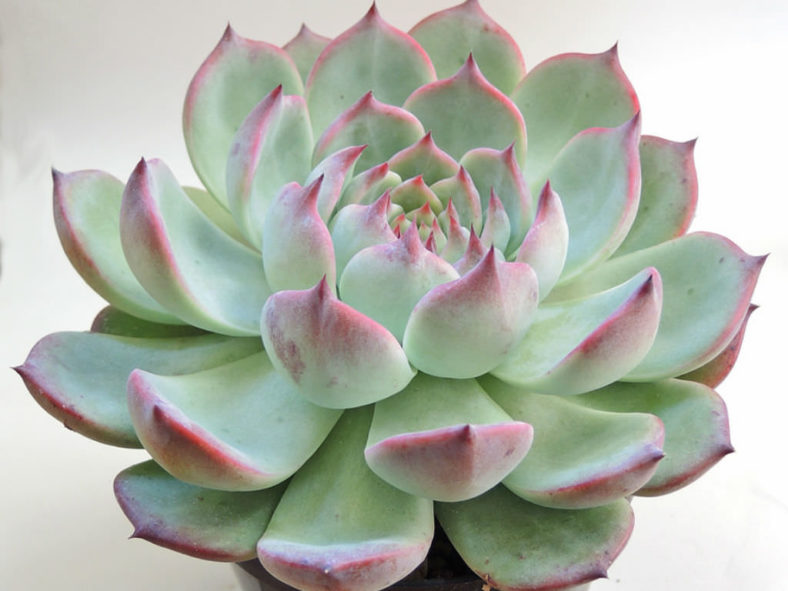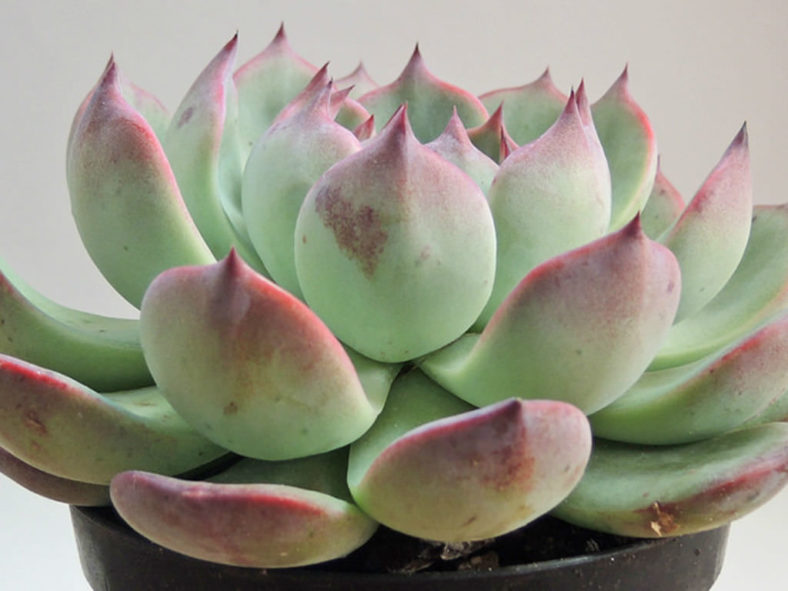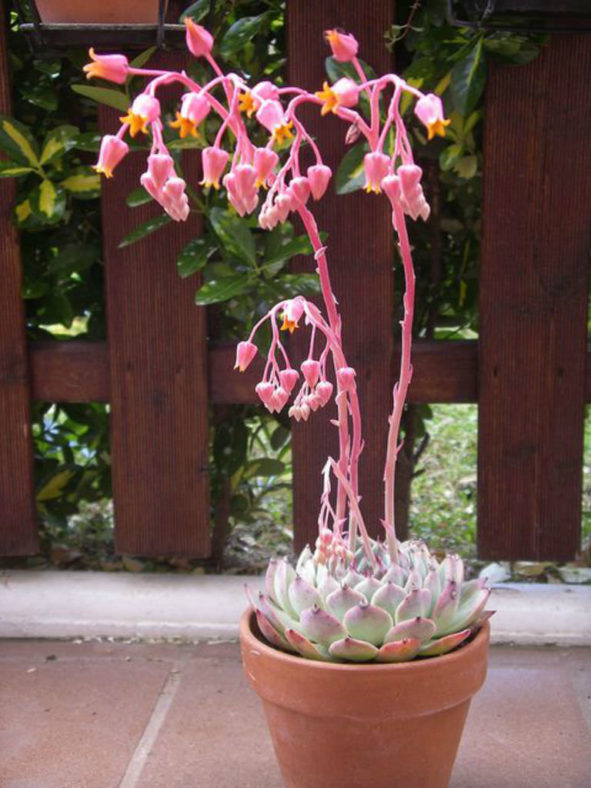Scientific Name
Echeveria chihuahuaensis Poelln.
Common Name(s)
Cat's Claw, Cat's Paw
Scientific Classification
Family: Crassulaceae
Subfamily: Sempervivoideae
Tribe: Sedeae
Genus: Echeveria
Etymology
The specific epithet "chihuahuaensis" (pronounced "chee-wah-wah-EN-sis") means "of or from Chihuahua" and refers to the Mexican state of Chihuahua, where this species was first discovered in the Colorado River valley in 1906.
Origin
Echeveria chihuahuaensis is native to Mexico (Sonora, Chihuahua, and Durango).
Description
Echeveria chihuahuaensis is a beautiful succulent that resembles a smaller version of the related Echeveria colorata. It forms a tighter, shorter rosette with smaller, more scalloped leaves with a more pronounced tip. The rosette can reach a diameter of up to 4 inches (10 cm). There are a few forms with varying degrees of pinkish edging to the bluish-gray leaves. Some clones are offsetting freely, and others do not produce offsets.
The flowers are coral-pink with a yellow interior and appear on pinkish, lightly-branched stalks that can grow up to 10 inches (25 cm) tall.
This species is often misspelled as Echeveria chihuahuensis.

Hybrids of Echeveria chihuahuaensis
How to Grow and Care for Echeveria chihuahuaensis
Hardiness: USDA hardiness zones 9b to 11b: from 25°F (-3.9°C) to 50°F (10°C).
Most common Echeveria species are not complicated succulents to grow, provided you follow a few basic rules. First, be careful never to let water sit in the rosette, as it can cause rot or fungal diseases that will kill the plant. Additionally, remove dead leaves from the bottom of the plant as it grows. These dead leaves provide a haven for pests, and Echeverias are susceptible to mealybugs. Finally, as with all succulents, maintaining careful watering habits and providing ample light will help ensure success.
Repot as needed, preferably during the warm season. To repot a succulent, ensure the soil is dry before repotting, then gently remove the pot. Knock away the old soil from the roots, removing any rotted or dead roots. Treat any cuts with a fungicide.
Most Echeverias can be easily propagated from leaf cuttings, although some are better propagated from seeds or stem cuttings. To propagate a leaf cutting, place the individual leaf in potting soil for succulents and cover the dish until the new plant sprouts.
Learn more at How to Grow and Care for Echeveria.
Links
- Back to genus Echeveria
- Succupedia: Browse succulents by Scientific Name, Common Name, Genus, Family, USDA Hardiness Zone, Origin, or cacti by Genus
Photo Gallery
Click on a photo to see a larger version.


